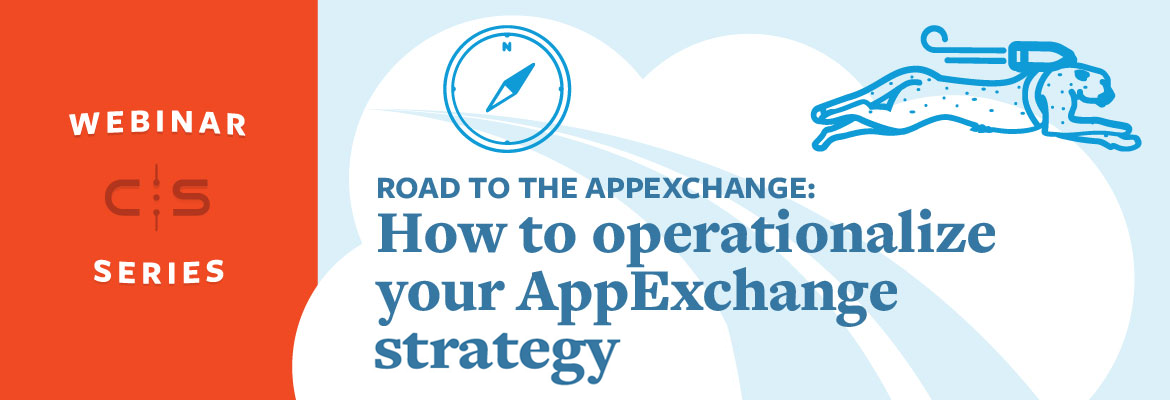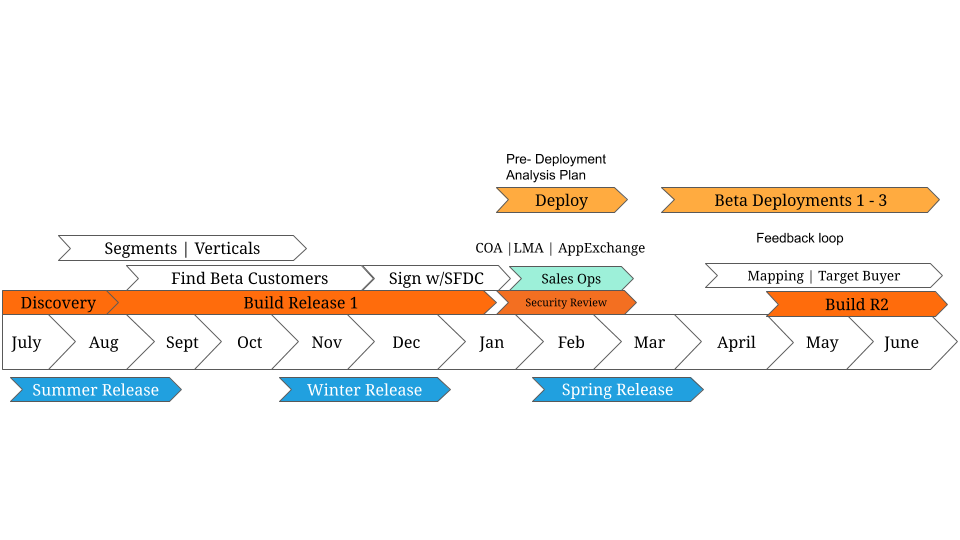
We’re halfway through our Road to the AppExchange Series! This week, Sean Hogan, CodeScience CRO, and Ron Kiker, Business Analyst of our Expert Services team, are back to discuss the importance of the operational aspects of your AppExchange strategy.
We’re covering a few of the takeaways here, but if you’d to understand how to use these tools to enhance your trial experience as well as creating a feedback loop to drive market fit, you’ll have to register here. By registering once, you’ll gain access to each of the previous recording immediately.
Foundations to Your Operations
The operational aspects of your AppExchange strategy may seem like a secondary priority to some, but it is these tools that ensure your business runs smoothly.
A typical timeline for an application

In looking at a typical timeline of an application, we recommend you implement your operational strategy right after submitting for security review — so once you pass, you’ll be able to go live quickly and roll out licenses to new customers.
There are two groups of tools every Salesforce partner should know about.
Your IP Tools
- License Management App (LMA)
- Enables each ISV to control the number of users who have access to their ISV App on a per-customer basis.
- Feature Management App (FMA)
- A newer product from Salesforce that gives ISVs the ability to turn on or off certain features within your app — on a license level. While it is an extension of the LMA, it must be requested separately. It gives ISVs an easy way to manage tiered products or monetize through premium features which previously had been a frustration point for many customers.
Your Transaction Tools
- Channel Order App (COA)
- OEM and ISVForce license agreements fall under the COA. This is a traditional B2B two-step transaction — where you get a subscription from your customers, and you then report on that subscription to Salesforce for reporting and royalties.
- Checkout Management App (CMA)
- Checkout license agreements use the CMA. The CMA is much closer to a self-service tool where you can manage licenses, communication, and support all within a single tool.
Common Questions about the COA and CMA
There are a few common questions we hear when helping clients stand up their operational structures.
Do I have to use the COA or CMA?
Yes, every partner with a license agreement must report their Salesforce revenue through either the COA and CMA — the tool you ultimately use depends on your license agreement with Salesforce.
Does the COA have APIs?
Many partners already have their own billing operations in place and now must involve Salesforce as part of the process. This can be challenging to get the two systems working together and sharing the appropriate information between them can be tricky. Fortunately, Salesforce provides an API to the COA to help these partners. While it is a bit complex to stand up, we help partners incorporate the COA to their billing process.
What should I plan for as I scale?
Because the COA touches initial orders, add-on orders, and cancellations, having a set group to handle this blend of sales and billing becomes extremely important as your company grows and scales. Hiccups within your operations can delay customers going live and disrupt your customer satisfaction.
If you want to learn best practices when it comes to using these tools to drive your go-to-market strategy forward as well as creating effective feedback loops within your organization, you’ll have to register here.
CodeScience’s goal is to help partners thrive on the AppExchange. Whether you’re just getting started or have been a partner for a while now, see how working with a Master Navigator PDO can make a difference for you. Contact us today!


